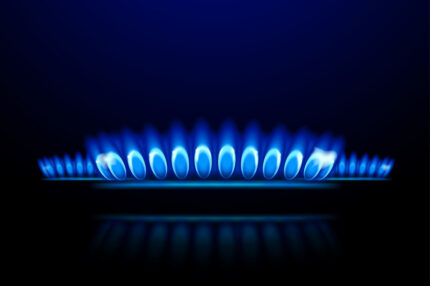The world’s major oil companies have all reported record annual profits. And, despite what Wall Street is telling you, these are still stocks you want to have in your portfolio for both growth and dividends.
One oil major in particular reported some great earnings on February 2, making it a buy. Let’s take a look…

The company in question is Shell PLC (SHEL).
Europe’s largest oil and gas company said that adjusted earnings had more than doubled, to $39.9 billion—smashing the previous record of $28.4 billion set in 2008. That was the highest profits figure in Shell’s 115-year history!
And Shell’s adjusted earnings of $9.8 billion in the final quarter of the year—its second-highest quarterly figure ever—far exceeds average analyst estimates of $8 billion.
Almost two-thirds of Shell’s profits in the quarter came from its natural gas business, which includes the world’s largest liquefied natural gas (LNG) trading operation. That division generated adjusted earnings of $6 billion as Shell sold 16.8 million tons of LNG, up from 15.7 million tons in the third quarter.
The company’s net earnings in 2022 were more than 70% higher than just eight years earlier in 2014. One of the biggest differences between now and then was in the refining division, where refining margins were five times as high!
The other difference was pretty obvious: the normally quiet European natural gas market suffered massive shortages. The Ukraine war meant European gas prices averaged $40 per million BTU in 2022, almost four times what they were in 2014!
Shell’s Big Bet on Natural Gas
Shell’s latest results show that its big bet on natural gas—the $54 billion purchase of BG Group in 2015—was a wise move. At the time, Wall Street hated the move and punished the stock.
Most of the numbers below come from an article by The Financial Times’ Lex team:
- Income at Shell’s midstream “integrated gas” division has grown by half since 2014—to $16.1 billion—and now accounts for 40% of Shell’s overall result.
- Since 2014, the company has also gotten a lot more out of less. Shell’s cost per barrel of oil in 2022 was about half what it was in 2014, according to Bernstein analysts. That, together with those higher prices for natural gas, means net income from upstream operations was about 2.5 times that in 2014—despite 7% fewer barrels being produced.
- Those higher natural gas prices and stronger refining margins helped push Shell’s return on capital employed (ROCE) to about 16%, more than double 2014’s number.
Shell Payouts
Now, let’s look at how Shell has treated its shareholders…
Shell distributed $26 billion to shareholders in 2022—more than 35% of operating cash flow. This included $18 billion in share buybacks. The company said it would buy back a further $4 billion in stock in the first four months of 2023.
The company also boosted its cash dividend by 15% in the fourth quarter, the fifth increase since it delivered a more than 60% cut in the wake of the coronavirus pandemic.
Overall, management is far exceeding its minimum targets of 4% annual dividend growth and shareholder distribution of 20% to 30% of operating cash flow.
Shell Remains Cheap
During the past five years Shell has reduced unit development cost and operating cost by 51% and 26%, respectively. Its goal is to reduce development costs by a further 10% and operating costs by 20% to 30%.
Shell has also reduced and focused investment on the highest quality assets. According to Shell, its slate of new projects will be return accretive with anticipated average returns of 20% to 25%, an average break-even price of $30 per barrel, and an average payback period of seven years. Based on Rystad data, Morningstar estimates Shell’s project queue has an average break-even price of just $42 per barrel, well below the current oil price.
Despite this, Shell remains an unloved, but high-return, investment. Even after the more than 25% share price increase seen in 2022, the oil and gas behemoth remains lowly rated by Wall Street. Shell sits at an EV/EBITDA ratios of 3. EV/EBITDA is a ratio that compares a company’s Enterprise Value (EV) to its earnings before interest, taxes, depreciation, and amortization (EBITDA). The EV/EBITDA ratio is commonly used as a valuation metric to compare the relative value of different businesses.
I believe Shell stands to benefit more than its peers from the rise in global natural gas demand and likely strong prices for LNG over the next decade as it becomes an integral part of the energy landscape.
With regard to dividends, I would not be surprised to see an increase in the long-term return guidance (as a percent of cash flow) at Shell’s June strategic update. The current yield is 4.42%.
The stock is a buy anywhere in the $55 to $60 range.





